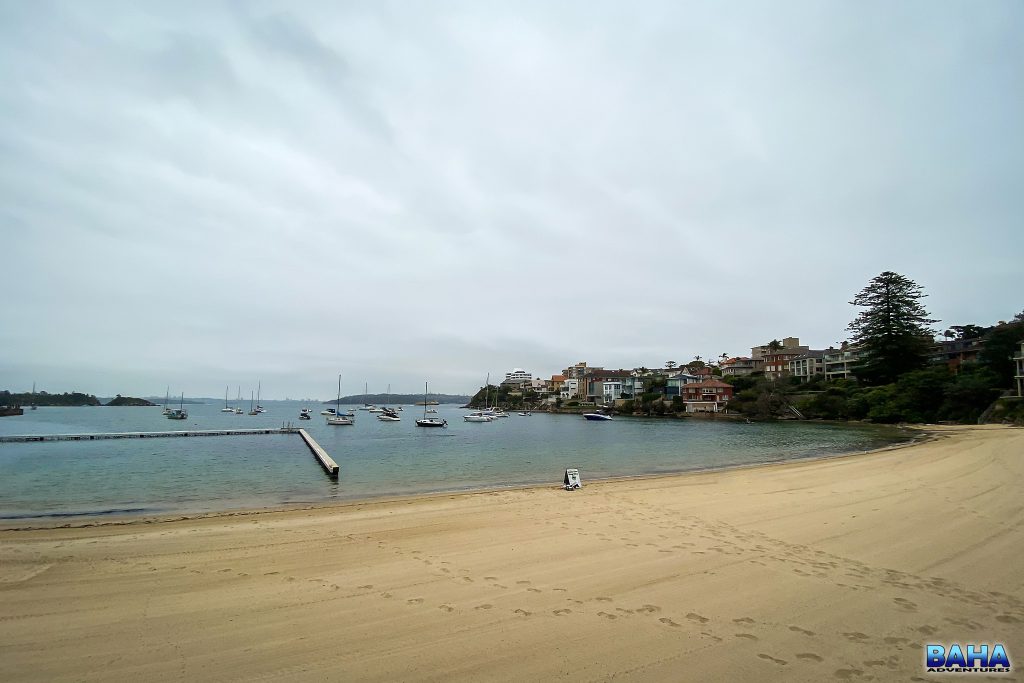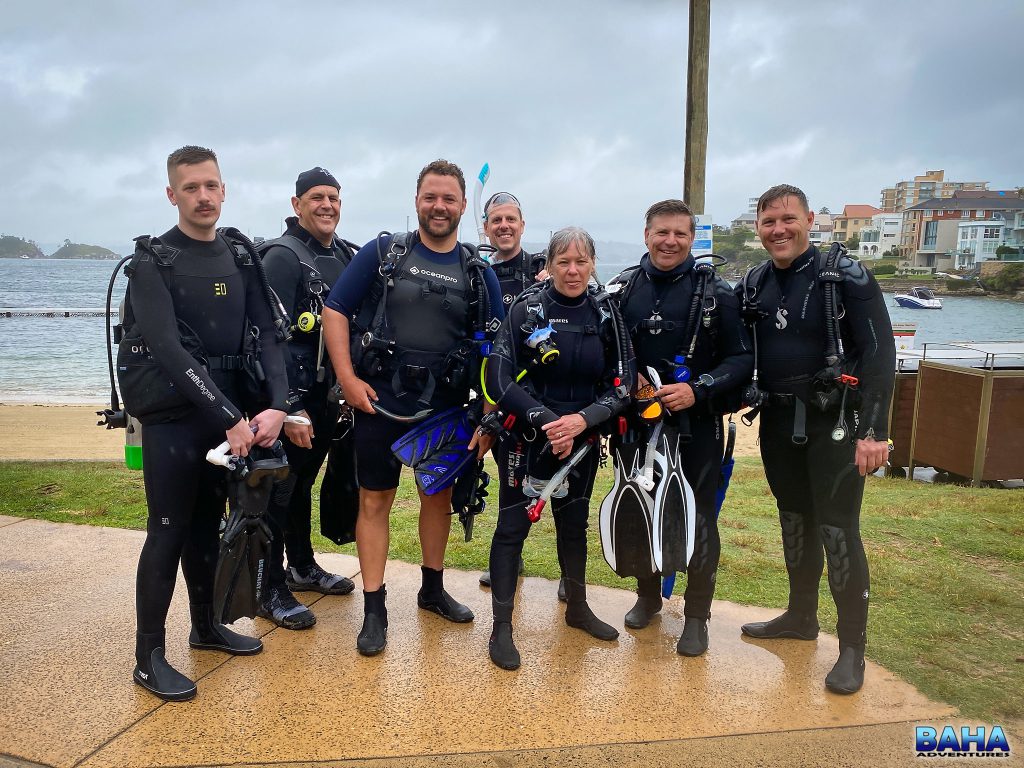There’s no doubt about it, diving comes with a few inherent risks. And while it’s safety record is great, and it’s standards are high, your safety is ultimately your own responsibility. And if you can extend that responsibility to also include others, amazing! With that in mind, I signed up to do a Rescue Diver course, which also includes an Emergency First Responder certification.
As is the norm with PADI courses, the weeks preceding the course were spent going through online training, and writing short online exams. We then gathered at the dive shop on Friday evening to meet our dive buddies, do a short knowledge review, and collect our gear. And then the real fun began…
Day 1 – The Skills
I arrived at Little Manly on an overcast morning, with a few splatterings of rain. I guess this was a good thing, since we had the beach and water almost entirely to ourselves. We set up our gear, had a quick briefing on what to expect from the day, and then headed straight into the water.
The day began with a few simple skills (for example, snorkel regulator exchanges) which we’d previously covered in our Open Water and Advanced Open Water courses. They seemed unnecessary; that said, practicing skills is massively beneficial, to a point where they become second nature. And I guess it was also a safety gate to ensure we were ready for what lay ahead.
We then practiced a long list of skills, one at a time, starting with a few surface skills. These included skills such as approaching, and dealing with, both tired and panicked divers.
Along with our instructor, we were joined by 2 dive masters in training, who seemed to be there to make our lives as painful as possible. I say this tongue in cheek, as they did a great job at preparing us, by doing annoying little things like climbing on top of us if we got to close while they were “panicked”.
After completing the surface skills, we headed to the bottom to practice some underwater skills, such as dealing with catatonic divers, slowing panicked diver’s ascents, and bringing unconscious divers to the surface.
We then climbed out of the water for a quick cup of coffee and a snack. Before heading straight back in – there’s no rest for the wicked.
The next skills we practiced were back on the surface. These included going through the various tows, and practicing the different methods used to carry unconscious divers out of the water. We also went through giving rescue breaths in the water, as well as removing gear in the water.
There were a few fun moments when we managed to lose a bit of gear during the training. This gave us an excuse to head out and search for it, during which time we managed to find a few beautiful moray eels, and a lot of luderick.
To end our day in the water, we spent some time practicing underwater search patterns, which was great fun.
Dry and back at the shop, we grabbed a few new tanks for the next day, and then practiced setting up the Oxygen. And with that, we’d ticked off most of the skills.
Day 2 – The Scenarios
The next morning began much the same as the first…cold and wet at Little Manly. The plan for the day was to go through scenarios, which meant putting all of day 1’s skills into practice, end to end.
The instructor would get us to stand on the beach with our backs turned, he’d then setup a scenario with the two dive masters, and then the fun would begin.
Examples of some of the scenarios we went through were tired divers, unconscious divers on the surface, panicked divers, and a divers with a lost buddy (who hadn’t surfaced).
In all of these scenarios we needed to decide as a group how to react. For example, one of us would generally keep an eye on the divers from the shore, while another would call emergency services, and another one or two of us would swim out to assist.
We did this over and over and over again, having a debrief after each scenario, until we’d all had the opportunity to practice each skill and role, multiple times.
It’s amazing how, even while role playing, you realise how easily things can go wrong, and how complex it can be to formulate a cohesive plan. Just remember, as they say in the Emergency First Responder course, adequate care given, is better than perfect care withheld.
When our instructor was comfortable that we’d all done enough practice, and were capable of all the skills, we called it a day. We’d succeeded, we were rescue divers.
For those of you who dive frequently, I’d highly recommend doing this course. It raises your level of awareness, both of yourself, as well of those around you. The skills you learn are invaluable, and highly transferable to any emergency situation in our daily lives. Hopefully you’ll never need them but, if you do, you’ll find yourself better prepared to assist, and possibly save a life.


